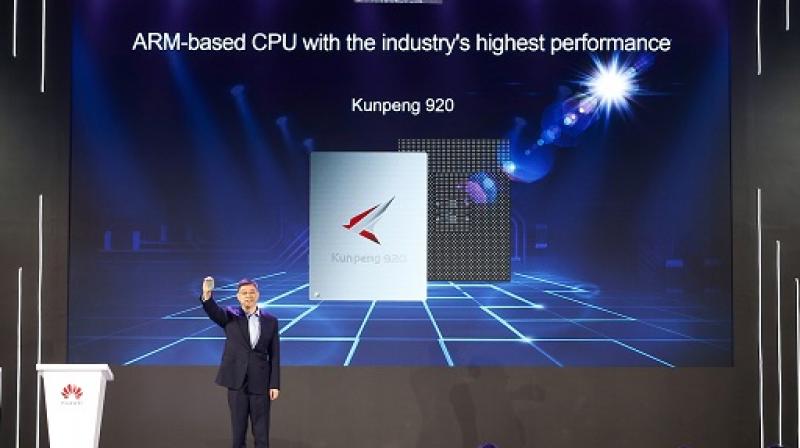Huawei announces industry’s highest performance ARM-based CPU

Huawei has announced the industry's highest-performance Advanced RISC Machine (ARM)-based CPU. Called Kunpeng 920, the new CPU is designed to boost the development of computing in big data, distributed storage, and ARM-native application scenarios. Huawei will join with industry players to advance the ARM industry and advance an open, collaborative, and win-win ecosystem, taking computing performance to new heights.
Kunpeng 920 is the industry's highest-performance ARM-based server CPU. Using the 7nm process, the CPU was independently designed by Huawei based on ARMv8 architecture license. It improves processor performance by optimising branch prediction algorithms, increasing the number of OP units, and improving the memory subsystem architecture. At a typical frequency, the Kunpeng 920 CPU scores over 930 in the SPECint Benchmarks test, which is 25% higher than the industry benchmark. At the same time, power efficiency is 30% better than that offered by industry counterparts. Kunpeng 920 provides much higher computing performance for data centres while slashing power consumption.
Kunpeng 920 integrates 64 cores at a frequency of 2.6GHz. This chipset integrates 8-channel DDR4, and memory bandwidth exceeds incumbent offerings by 46%. System integration is also increased significantly through the two 100G RoCE ports. Kunpeng 920 supports PCIe 4.0 and CCIX interfaces and provides 640Gbps total bandwidth. In addition, the single-slot speed is twice that of the incumbent offering, effectively improving the performance of storage and various accelerators.
Huawei released its TaiShan series servers powered by Kunpeng 920, including three models: one with a focus on storage, another on high density, and a third focused on balancing both requirements. The TaiShan servers are built for big data, distributed storage, and ARM-native application scenarios. The ARM architecture is best suited for these scenarios with advantages in many-core and performance per watt.
TaiShan will enable computing platforms with high performance and low power consumption for enterprises. For example, in big data scenarios, the TaiShan servers are tuned for optimal many-core high concurrency and resource scheduling to deliver a 20% computing performance boost. Based on the TaiShan servers, Huawei Cloud also provides elastic cloud services, bare metal services, and cloud phone services.
Huawei continuously promotes industry cooperation in terms of hardware, basic software, and applications. Huawei has been working with industry organisations such as Green Computing Consortium (GCC), Linaro, and Open Edge and HPC Initiative (OEHI) to build an open, collaborative industry ecosystem, alongside partners such as Hortonworks, Microsoft, Oracle, SAP, SUSE, Ubuntu, and China Standard Software.
On the hardware side, Huawei is a core member of Linaro. On the basic software side, Huawei is a Platinum member of the OpenStack Foundation and a founding member of Cloud Native Computing Foundation (CNCF). With regard to applications, Huawei has joined the GCC. GCC has released the Green Computing Consortium Server Technical Standards Report, along with other efforts to build a green open source computing community. Huawei is also a member of the OEHI.
Huawei believes that an intelligent society with all things connected, sensing, and intelligent is underway, and this trend is picking up speeds. The development and convergence of ARM-based applications on smart terminals are accelerating, along with cloud-device collaboration. In addition, new applications in cloud computing are driving data diversity. For example, big data applications, distributed storage, and some edge computing scenarios have specific energy efficiency requirements for many-core high-performance computing. In such a context, ARM systems stand out with unique advantages in performance and power consumption.
Therefore, in view of the industry trends and application requirements, a new era of diversified computing is unfolding. Multiple data types and scenarios are driving computing architecture optimisation. Combining multiple computing architectures for optimal performance becomes a must.
